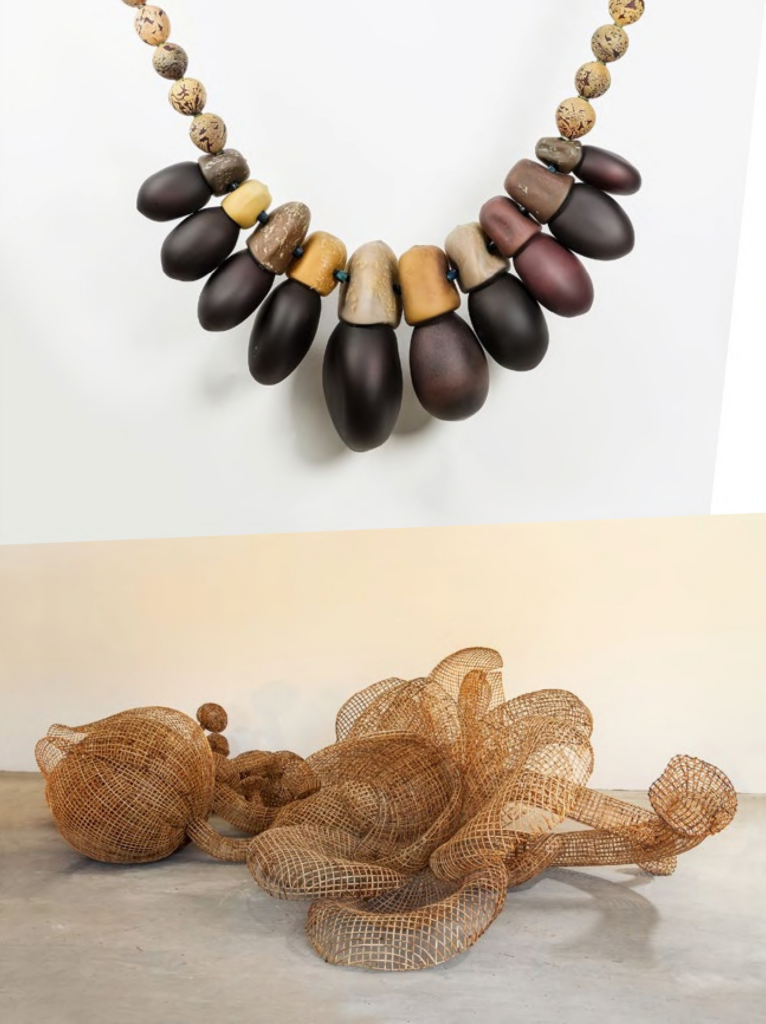Born in 1971 in Battambang, Cambodia, he lives and works in Phnom Penh, Cambodia
Rang Phnom Flower
2015
Sopheap Pich is known for large-scale, organically inspired works made from natural and traditional materials, such as rattan, bamboo, and burlap. Having left Cambodia with his family as a refugee in the late 1970s, he eventually settled in the United States. There, he received an MFA in painting from the School of the Art Institute of Chicago, subsequently deciding to return to his homeland in 2002. Today, he produces his works together with a team of assistants in his studio outside of Phnom Penh.
Rang Phnom Flower (2015) developed from the idea of creating an oversized, flowering cannonball tree (Couroupita guianensis; rang phnom in Khmer) and was inspired by the artist’s trip to Ratanakiri in northeastern Cambodia, where the landscape is full of these big trees with magnificent bright flowers. Because of their resemblance to the sal tree, under which the Buddha is believed to have been born, they are often planted near Buddhist temples, and so the trees—native to the Americas—spread across Southeast Asia. These rang phnom are seldom cut down, since the wood is not desirable, and they are believed to have spirits living in them. The sculpture is made of hundreds of strands of woven rattan. Through its delicate crafting and amplification of the plant’s budding forms, the work conveys the power of nature and its fragility—a balance rendered in monumentality.
Amulet (Hevea Afzelia) (2023) displays the greatly enlarged seeds of the Cambodian Beng and rubber trees, which are strung along a thick rope, like beads, recalling the bracelets worn by Buddhists as a sign of faith and devotion. The work incorporates a new material for the artist; common seeds are recreated in handblown glass. The Cambodian Beng tree (Afzelia xylocarpa) is an endangered species native to Southeast Asia. Its edible seeds are used for medicinal purposes; its wood is highly valued. The rubber tree (Hevea brasiliensis) is linked to the history of colonialism and monoculture. Although native to South America, it has been cultivated for over a century in Southeast Asia, where most of the world’s rubber plantations are now located. Pich magnifies the seeds, and their complex histories, while hinting at the magnificent life-power within such small capsules, which can transform into giants.



